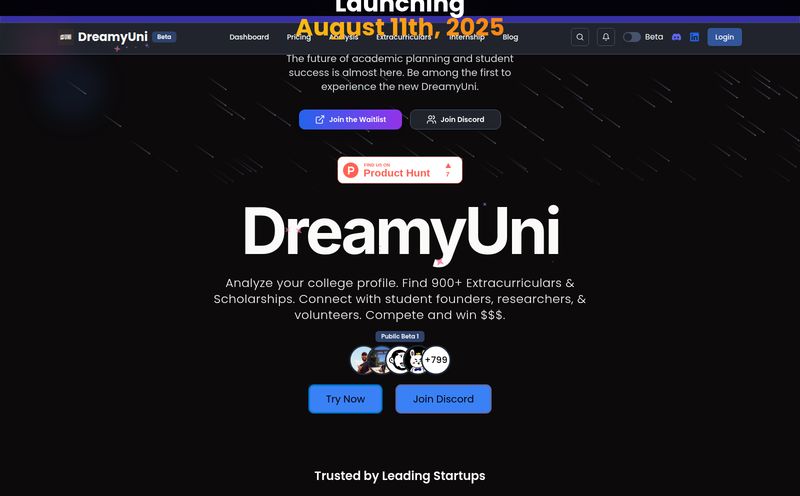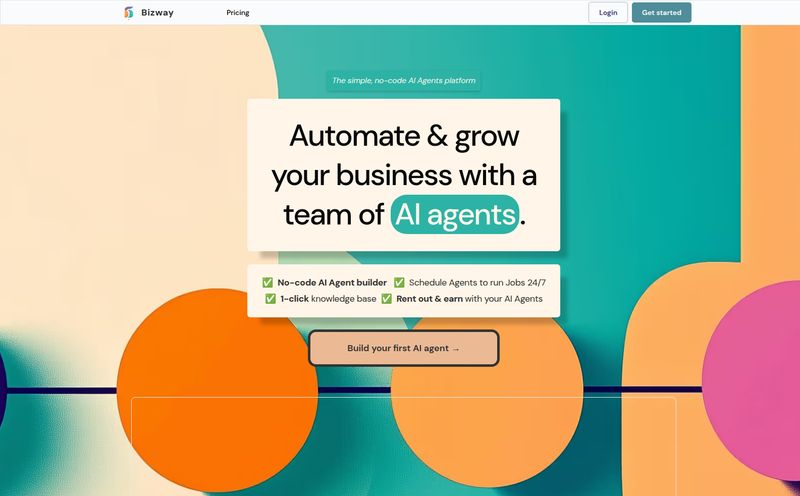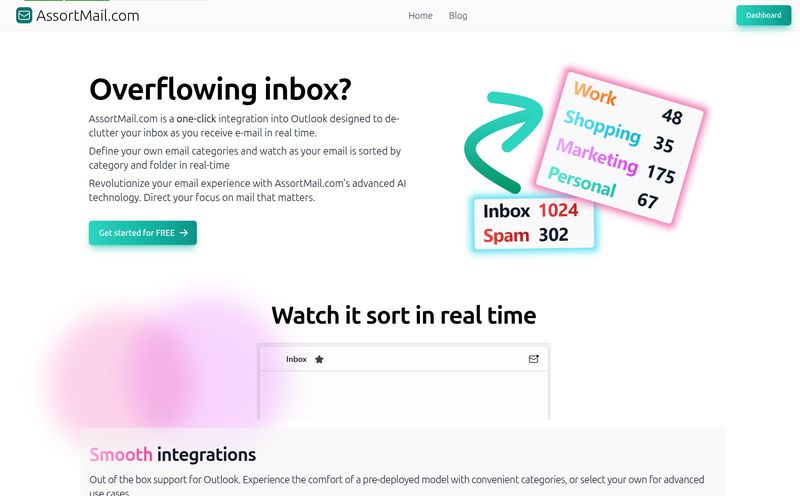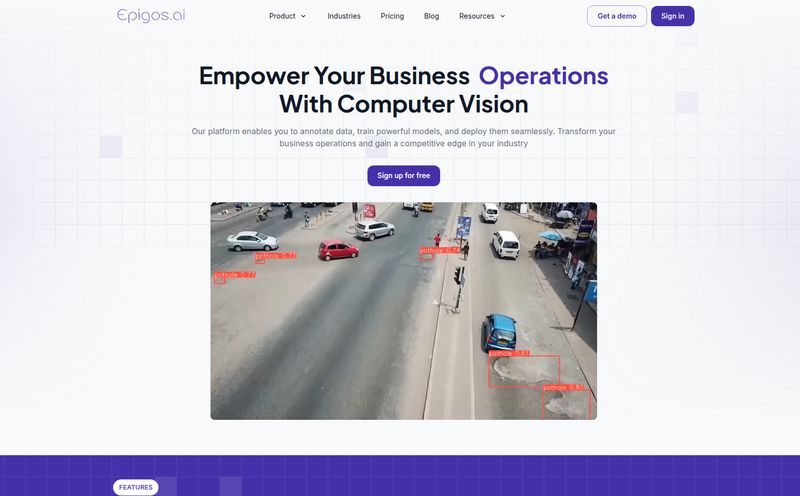If you've ever tried to build and deploy an AI agent that does more than just chat, you know the pain. You have this brilliant idea for an agent that can browse the web, fill out forms, or even test your code. You build the agent's brain using something like GPT-4 or Claude. It works great on your machine. And then you have to deploy it. Suddenly you're drowning in a sea of Dockerfiles, wrestling with cloud instances, and praying your authentication tokens don't expire mid-task. It’s a nightmare. The fun part—building the agent—is over in a day. The deployment part takes a week and a chunk of your sanity.
It's a problem I've complained about to anyone who will listen. For ages, we’ve needed a better way. A sort of... managed 'computer' for our AI creations to live in. A place that handles all the boring, frustrating infrastructure stuff so we can get back to building cool things.
Then I stumbled across Scrapybara. The name, a clever mashup of Scrapy and Capybara, caught my eye. A tool for scraping and automation, named after the world's most unbothered animal? I was intrigued. And after digging in, I think they might actually be onto something big here.
So, What on Earth is Scrapybara?
At its heart, Scrapybara gives your AI agent a body. A fully-functional remote desktop environment, complete with a browser, filesystem access and code sandboxes. Think of it as a virtual machine built specifically for AI agents, but without the headache of managing the actual VM. You write your agent's logic, and Scrapybara provides the hands and feet for it to interact with the digital world.
Instead of you worrying about autoscaling, setting up secure authentication, or maintaining the underlying systems, Scrapybara handles it. It’s an infrastructure layer that aims to be so simple, you almost forget it's there. It's built for developers who want to deploy fleets of agents to automate... well, pretty much any computing task you can think of.

Visit Scrapybara
Getting Started Is Almost Laughably Easy
This is the part that really got my attention. As someone who has spent far too many hours configuring environments, the setup process for new tools is always where my skepticism peaks. Scrapybara’s approach is a breath of fresh air. It’s basically one line of code.
For my Python-loving friends, it's just: pip install scrapybara
More of a TypeScript person? No problem: npm install scrapybara
From there, you instantiate the client, tell it to spin up a desktop (like Ubuntu or Windows), and give your agent its instructions. The unified API means you can swap out different AI models without rewriting your entire codebase. You can see in their documentation that connecting to OpenAI or Claude is trivial. It just works. That's the dream, isn't it?
The Features That Genuinely Make a Difference
A simple API is nice, but it’s the underlying power that counts. Scrapybara packs a few punches that solve some of the most annoying problems in agent development.
Speed, Scale, and Stability
Their site claims you can start hundreds of instances in milliseconds. Hundreds. Let that sink in. This isn't just for a single hobby agent. This is for serious, at-scale operations. Imagine you need to scrape data from thousands of product pages, or run a massive suite of end-to-end UI tests. Scrapybara is built to handle that kind of parallel workload with minimal latency. They manage the orchestration and scaling, so you don't have to become a part-time DevOps engineer.
An Interactive 'God Mode' for Your Agent
One of the hardest parts of working with AI agents is figuring out what went wrong when it inevitably does something weird. Scrapybara’s Interactive Stream is a brilliant solution. It lets you monitor your agent's actions in real-time. You can literally watch its screen. If you see it going off the rails, you can pause it and take over control yourself. It's like being a driving instructor in a dual-control car, ready to grab the wheel when the student driver (your AI) decides to aim for a fire hydrant.
Never Suffer Through a Login Screen Again
This might be my favorite quality-of-life feature. With Authenticated Access and Session Persistence, you can save and load website sessions. Your agent logs into a site once, you save that state, and you can resume that authenticated session anytime. No more brittle scripts that have to navigate a login flow every single time they run. You can pause an instance in the middle of a complex task and come back to it hours later, right where you left off. This is huge.
Your Choice of Playground: Ubuntu or Windows
The platform isn't picky. It offers both a feature-rich Ubuntu desktop and a full Windows desktop environment. This flexibility means you can build agents for tasks that might be specific to one OS or the other. It’s a small detail, but one that shows they’re thinking about real-world use cases, not just a sanitized, one-size-fits-all environment.
Real-World Uses Beyond Just Scraping
The name might have 'Scrapy' in it, but this platform is for more than just data extraction. Their examples show off the range:
- Codecapy.AI: An automated PR bot that analyzes code changes and executes UI tests in parallel Ubuntu instances. This is a powerful CI/CD application.
- CopyCapy: A straightforward tool to scrape and 'capyfy' any website. Your classic web scraping use case.
- Dungeon Crawler: An agent that plays a game! This one is just for fun, but it demonstrates the platform's ability to handle interactive, unpredictable environments.
This shows me they're building a true general-purpose platform for computer automation, not just a niche scraping tool.
Let's Talk Money: The Scrapybara Pricing Tiers
Pricing is always the elephant in the room. I was pleasantly surprised here. They have a "Scale as you go" model that feels very fair, especially for developers and small teams just getting started.
| Plan | Cost | Includes |
|---|---|---|
| Free | $0 | 10 compute hours, 100 agent credits, and 5 concurrent instances. |
| Basic | $29 / month | 100 compute hours/mo, 500 agent credits/mo, 25 concurrent instances. |
| Pro | $99 / month | 500 compute hours/mo, 2500 agent credits/mo, 100 concurrent instances. |
| Enterprise | Custom | Self-hosting, Dedicated Support, 99.9% Uptime SLA. |
Frankly, that Free tier is incredibly generous. 10 hours of compute time is more than enough to build a proof-of-concept and really kick the tires. An "agent credit" is consumed for each step (or assistant message with tool calls) your agent takes, which seems like a fair way to meter the AI-specific part of the process. It's a smart model that lets you experiment without pulling out your credit card.
My Two Cents on Scrapybara
I’m naturally skeptical of new tools that promise to solve all my problems. But Scrapybara has my attention. The simplicity is its greatest strength. The fact that it's backed by Y Combinator and has a glowing quote from an engineer at OpenAI—who also happens to be a strawberry farmer, which is just delightful—lends it a lot of credibility.
If I had to find a downside, it would be that its still a relatively new player in the space. The community around it is growing, but you might not find as many Stack Overflow answers as you would for a more established technology. But that's the trade-off with any new, innovative tool. You get to be on the cutting edge.
Conclusion: Time to Unleash the Capybaras?
Scrapybara feels like one of those tools that, in a year or two, we'll wonder how we ever lived without. It addresses a very real, very frustrating bottleneck in the development of capable AI agents. It takes the messy, complicated world of infrastructure management and hides it behind a clean API and a chill, capybara-themed interface.
If you're a developer who has an idea for an AI agent but has been put off by the operational overhead, you should give Scrapybara a try. The free tier makes it a no-brainer. It might just be the thing that lets you finally build that project you've been dreaming about.
Frequently Asked Questions
What is Scrapybara used for?
Scrapybara is a platform for running AI agents in remote desktop environments. It’s used for a wide range of tasks, including automated web scraping, software testing, data entry, and any other task that requires an AI to interact with a computer like a human would.
Is Scrapybara free to use?
Yes, Scrapybara has a generous free tier that includes 10 compute hours, 100 agent credits, and the ability to run up to 5 concurrent instances. This is typically enough to develop and test new agents.
What AI models does Scrapybara support?
The platform is designed with a unified API to be model-agnostic. Their examples prominently feature integration with OpenAI models (like GPT-4 for computer use) and Claude, allowing developers to choose the best model for their task.
Can I use Scrapybara for large-scale web scraping?
Absolutely. With the ability to spin up hundreds of instances in milliseconds and its focus on stability and scale, Scrapybara is well-suited for large-scale data scraping and parallel processing tasks.
What's the difference between compute hours and agent credits?
Compute hours refer to the total time your virtual desktop instances are running. Agent credits are consumed with each 'step' or thinking-cycle your AI agent performs, specifically when it calls an AI model through the platform's SDK. This separates the cost of the infrastructure from the cost of the AI's reasoning.
Does Scrapybara work with Windows and Linux environments?
Yes, it offers both full Windows desktop environments and feature-rich Ubuntu (Linux) desktop environments, providing flexibility for different automation needs.



